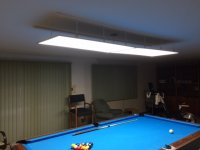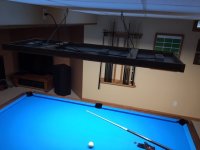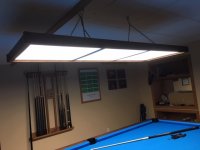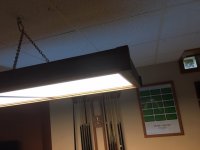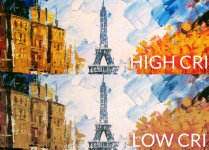I'll be building a new light to match my Gold Crown 1 and I'm considering (2) 1'x4' LED panels as the light source (like the ones in the link below) instead of fluorescent fixtures.
https://www.build.com/litetronics-fp030uf150dl/s1401961?uid=3312162
In the light I previously built to match my old AMF table, I had 2 8' fluorescent fixtures with a total of 8 Philips Natural Light T8 bulbs rated at 5000K and 2750 Lumens. I'm not experienced with LED lighting and was hoping someone could steer me in the right direction. I'd like to achieve the same amount of light, same light color and temperature in an LED panel as the T8 bulbs I used previously. Do the Kelvens and Lumens match up one for one LED vs fluorescent? From what I've seen, LED lighting can much "brighter" and distort colors. I prefer a "natural" light. Will I get the same amount of light using (2) 1' x 4' panels as I did with (8) T8 fluorescent bulbs?
https://www.build.com/litetronics-fp030uf150dl/s1401961?uid=3312162
In the light I previously built to match my old AMF table, I had 2 8' fluorescent fixtures with a total of 8 Philips Natural Light T8 bulbs rated at 5000K and 2750 Lumens. I'm not experienced with LED lighting and was hoping someone could steer me in the right direction. I'd like to achieve the same amount of light, same light color and temperature in an LED panel as the T8 bulbs I used previously. Do the Kelvens and Lumens match up one for one LED vs fluorescent? From what I've seen, LED lighting can much "brighter" and distort colors. I prefer a "natural" light. Will I get the same amount of light using (2) 1' x 4' panels as I did with (8) T8 fluorescent bulbs?
